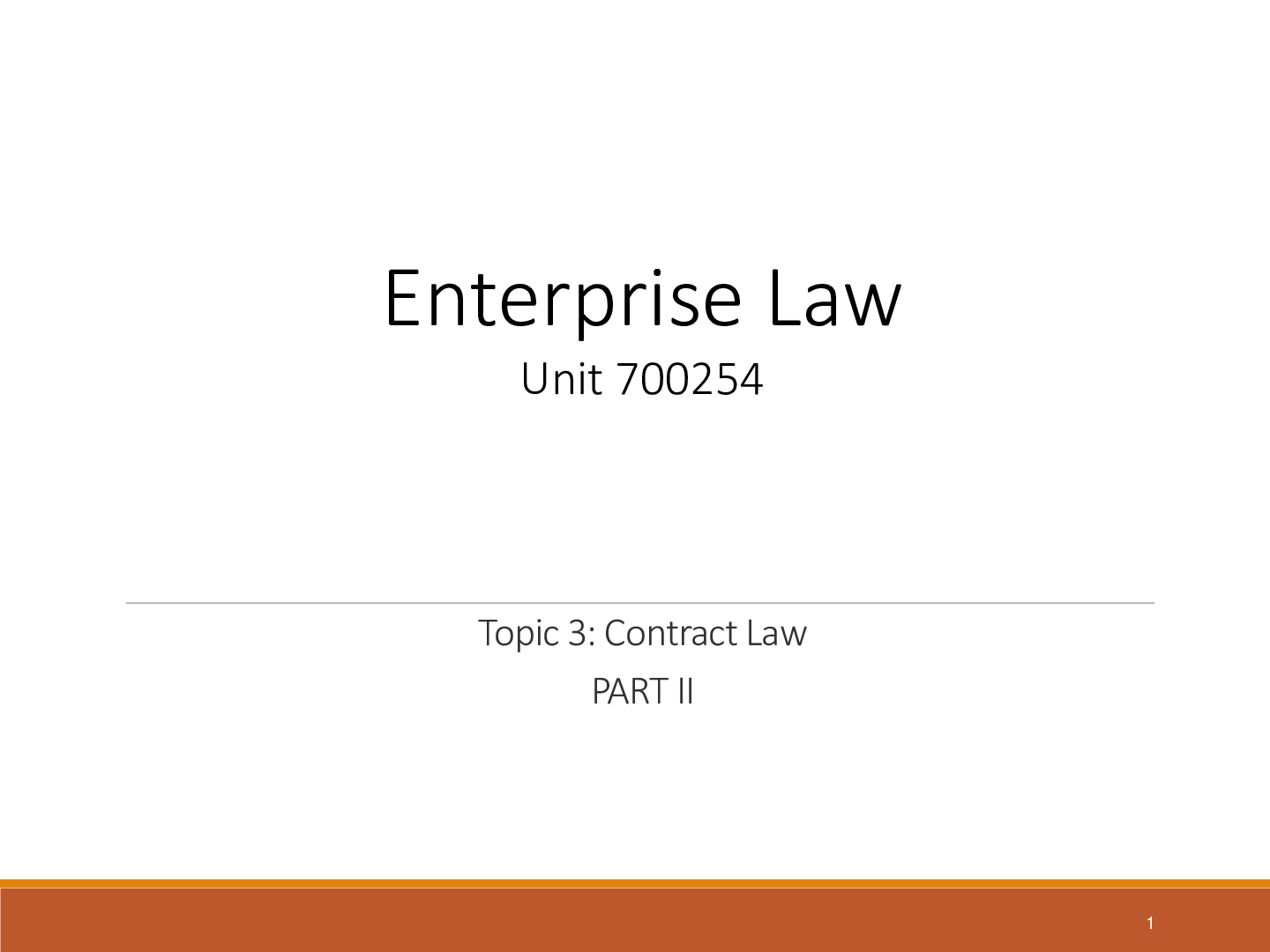Enterprise Law > Study Notes > Enterprise Law Unit 700254: Topic 2: Business Structures (part II) (All)
Enterprise Law Unit 700254: Topic 2: Business Structures (part II)
Document Content and Description Below
Topic 2: Business Structures (part II) Enterprise Law Unit 700254 1Topic Outcomes On completion of Topic 2 (part II), you should be able to: ◦ Outline the reasons for and importance of register... ing a business name ◦ Explain the legal restrictions imposed on the use of a business name ◦ Understand the three elements of a Partnership ◦ Explain the considerations for entering a lease ◦ Outline the following types of intellectual property (IP) ◦ Trademark ◦ Copyright ◦ Patents 2Business Names Registration of a business name is required in all jurisdictions by business names legislation where the owner/s do not use their own name(s) or company name. Can check availability and register with ASIC. An application will be refused if: The name is already registered in the state or territory The name is similar to a name already registered in the state or territory The name has already been registered as a company name Upon registration, the name is not “owned” but may be used for the period of registration 3Business Names The purpose of registration includes: ◦ Virtual monopoly rights on registration (but no proprietary right); ◦ Identification of the owners; ◦ Avoiding confusion by preventing similar or identical names being registered; and ◦ Provision of a public registry where information concerning the registered business can be accessed. 4Elements of a Partnership The Partnership Act 1892 (NSW), s1(1) tells us a partnership is ‘… the relation which exists between persons carrying on a business in common with a view of profit …’. Statements by the parties that they are or are not partners are not conclusive Three elements of a Partnership Carrying on a business In common With a view of profit 5Elements of a Partnership (1) Carrying on a business In the past the courts have made a strong distinction between one-off enterprises and ongoing activity, however, today courts tend to take a more flexible approach Preparatory work: compare Khan v Miah (2000) and Keith Spicer v Mansell (1970) 6Elements of a Partnership Khan v Miah (2000) Khan and Miah agreed to be partners in a restaurant business Khan had provided funding for the project and was closely involved in the planning and acquisition of premises, purchasing furniture and setting up a bank account Prior to opening there was a falling out and the men ended their relationship Held: Khan was a partner 7Elements of a Partnership Keith Spicer v Mansell (1970) Bishop and Spicer intended to form a company to run a restaurant They didn’t end up starting a company and the restaurant never opened Dispute arose as to liability to pay for furniture Issue for the court was whether Spicer and Bishop were partners Held that the parties’ arrangement didn't satisfy the ‘carrying on’ requirement 8Elements of a Partnership (2) In Common Requires consideration of whether potential partners are carrying on the same business or two related, yet separate businesses. A strong indication is whether they both experience the same losses/gains See: Taxicab Co Ltd v Stone [1930] and Degiorgio v Dunn [2004] ::::::::::::::::::::::::::::::::::::::::CONTENT CONTINUED IN THE ATTACHMENT::::::::::::::::::::::::::::::::::::::::::::::::::: [Show More]
Last updated: 2 years ago
Preview 1 out of 20 pages

Buy this document to get the full access instantly
Instant Download Access after purchase
Buy NowInstant download
We Accept:

Reviews( 0 )
$3.00
Can't find what you want? Try our AI powered Search
Document information
Connected school, study & course
About the document
Uploaded On
Sep 30, 2020
Number of pages
20
Written in
Additional information
This document has been written for:
Uploaded
Sep 30, 2020
Downloads
0
Views
123

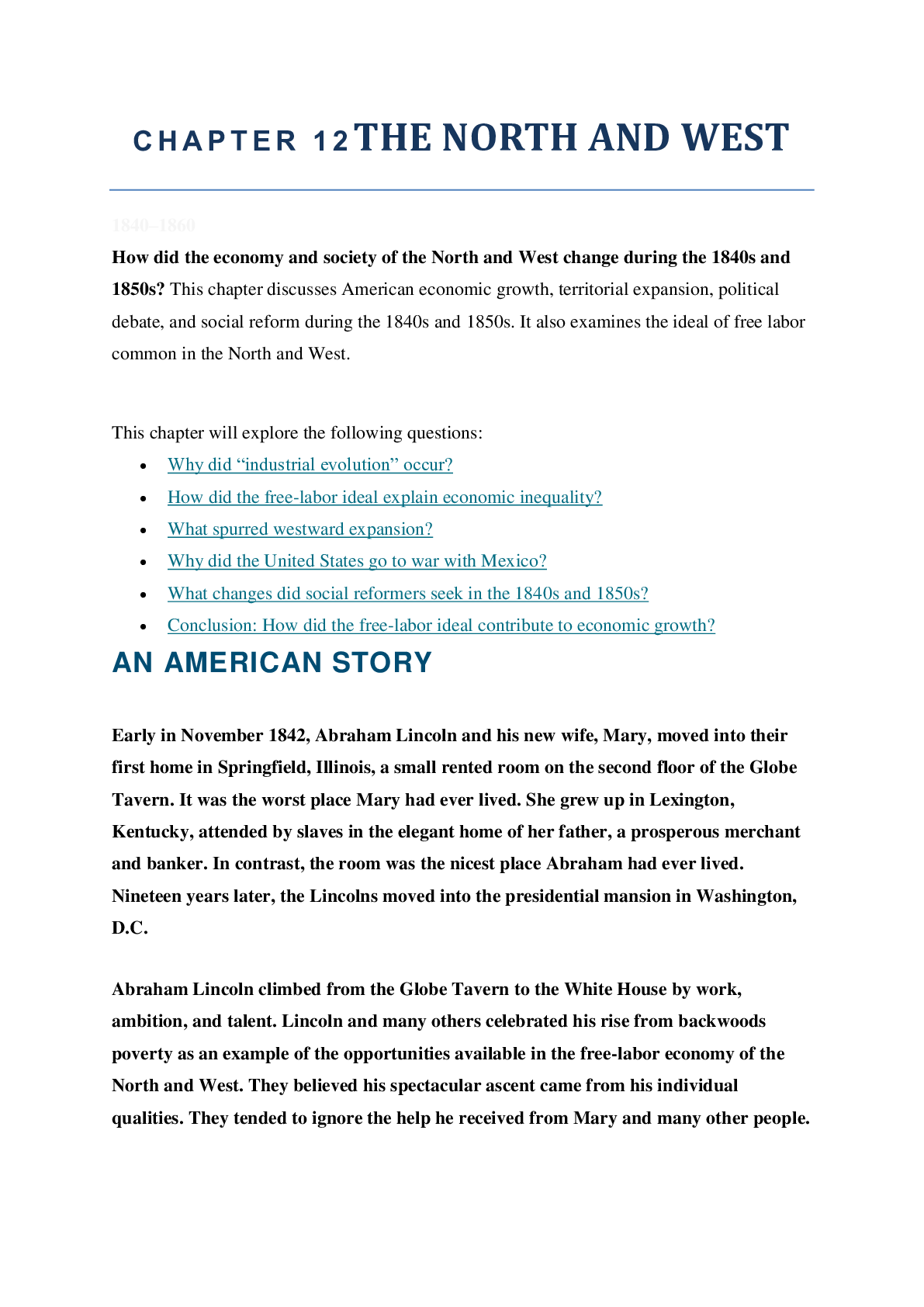


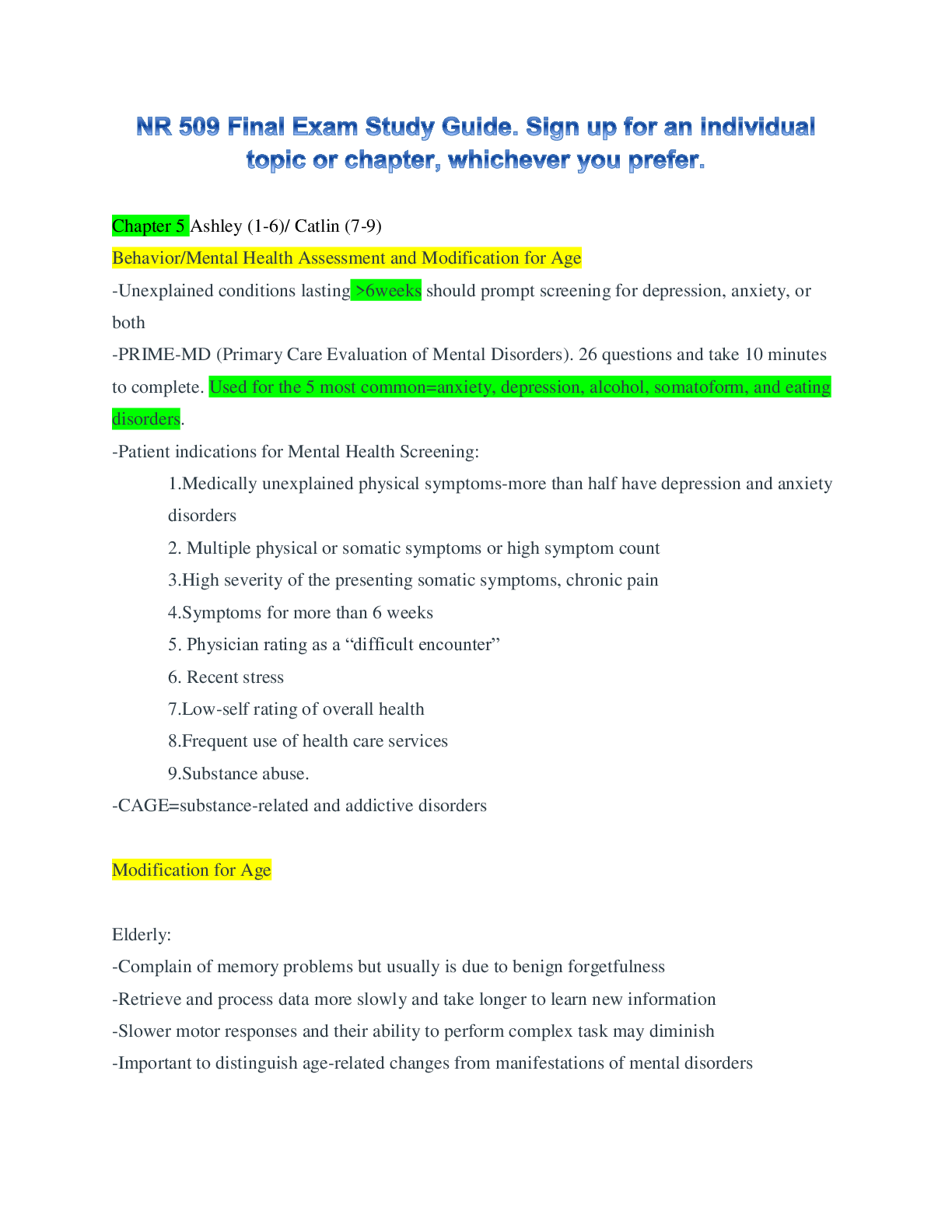

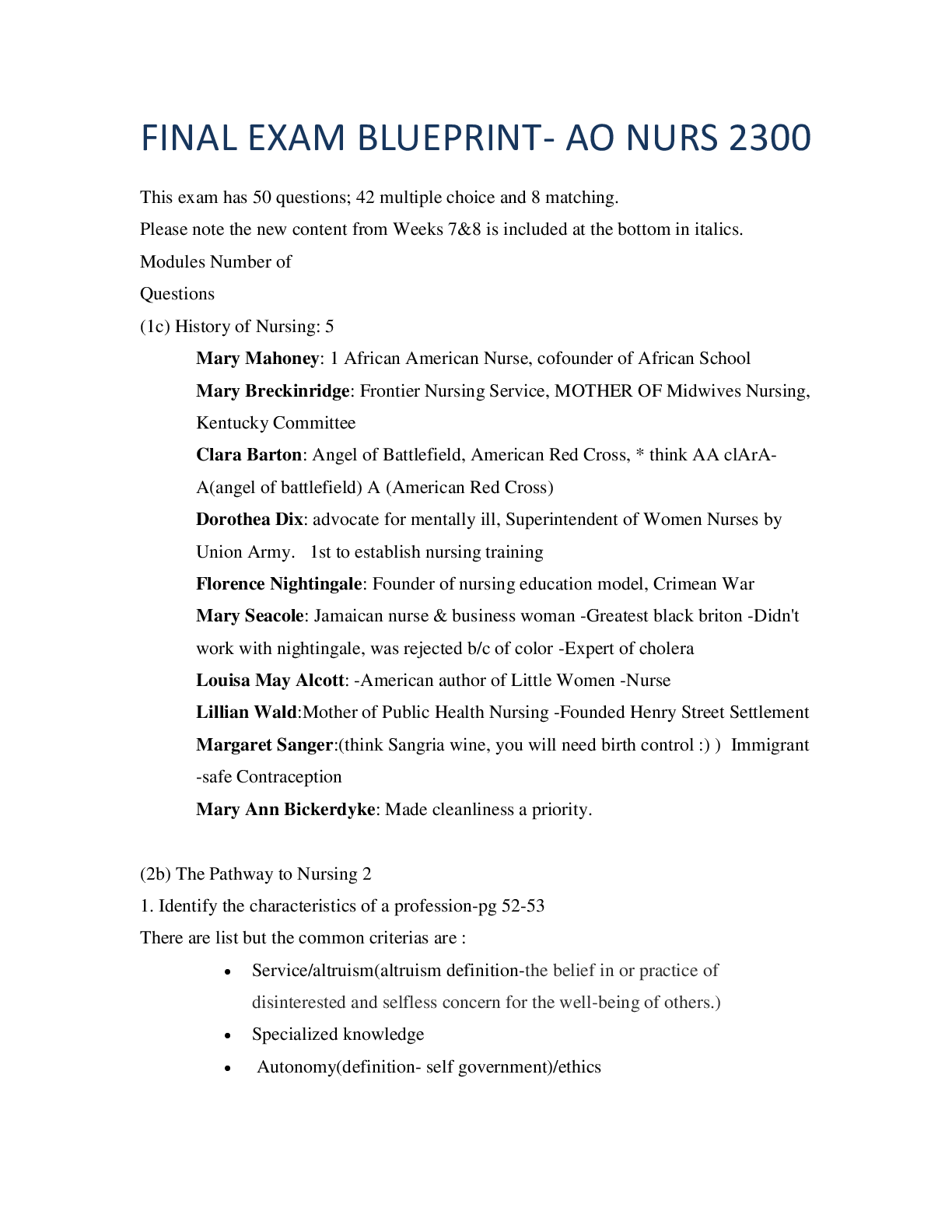
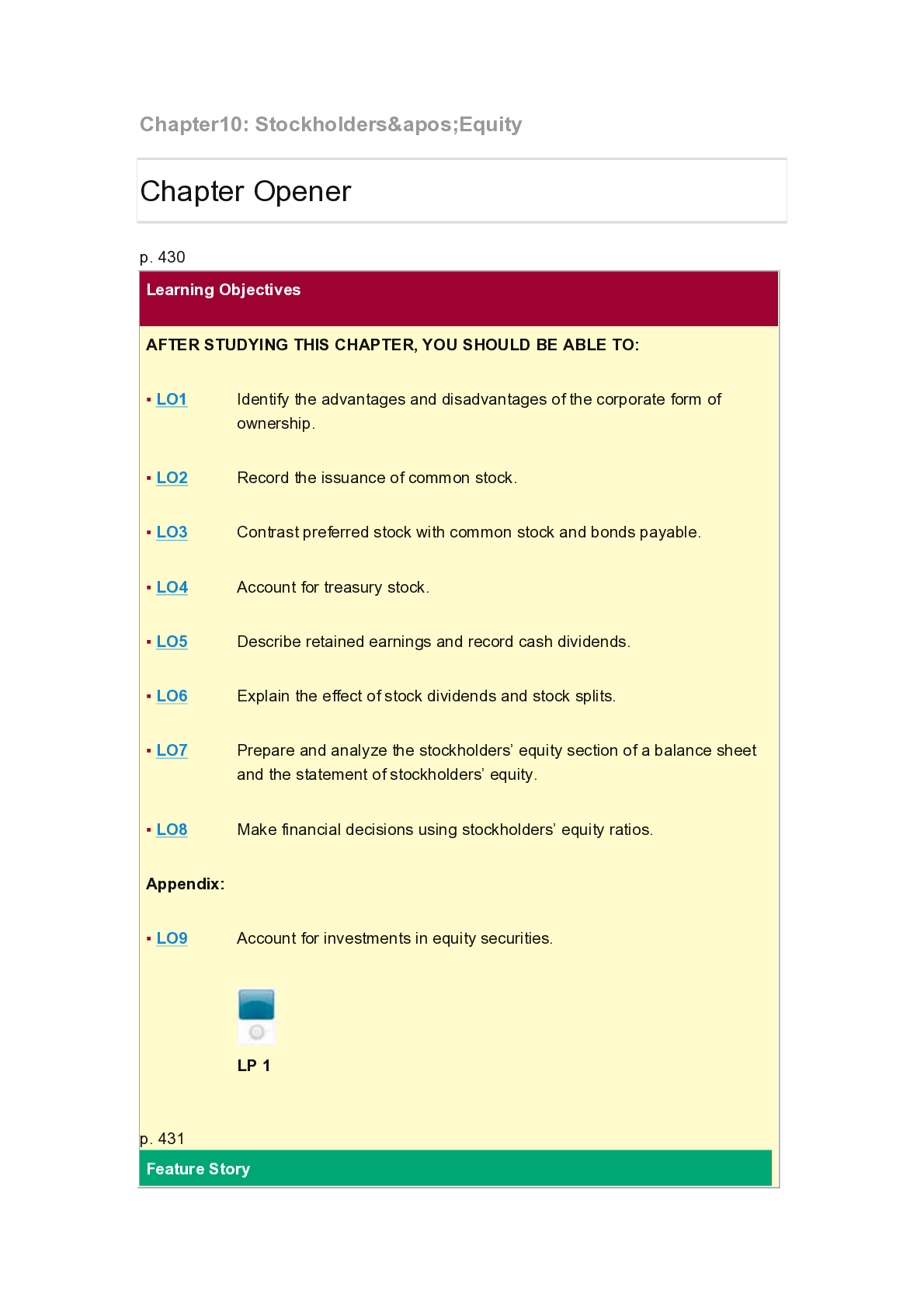


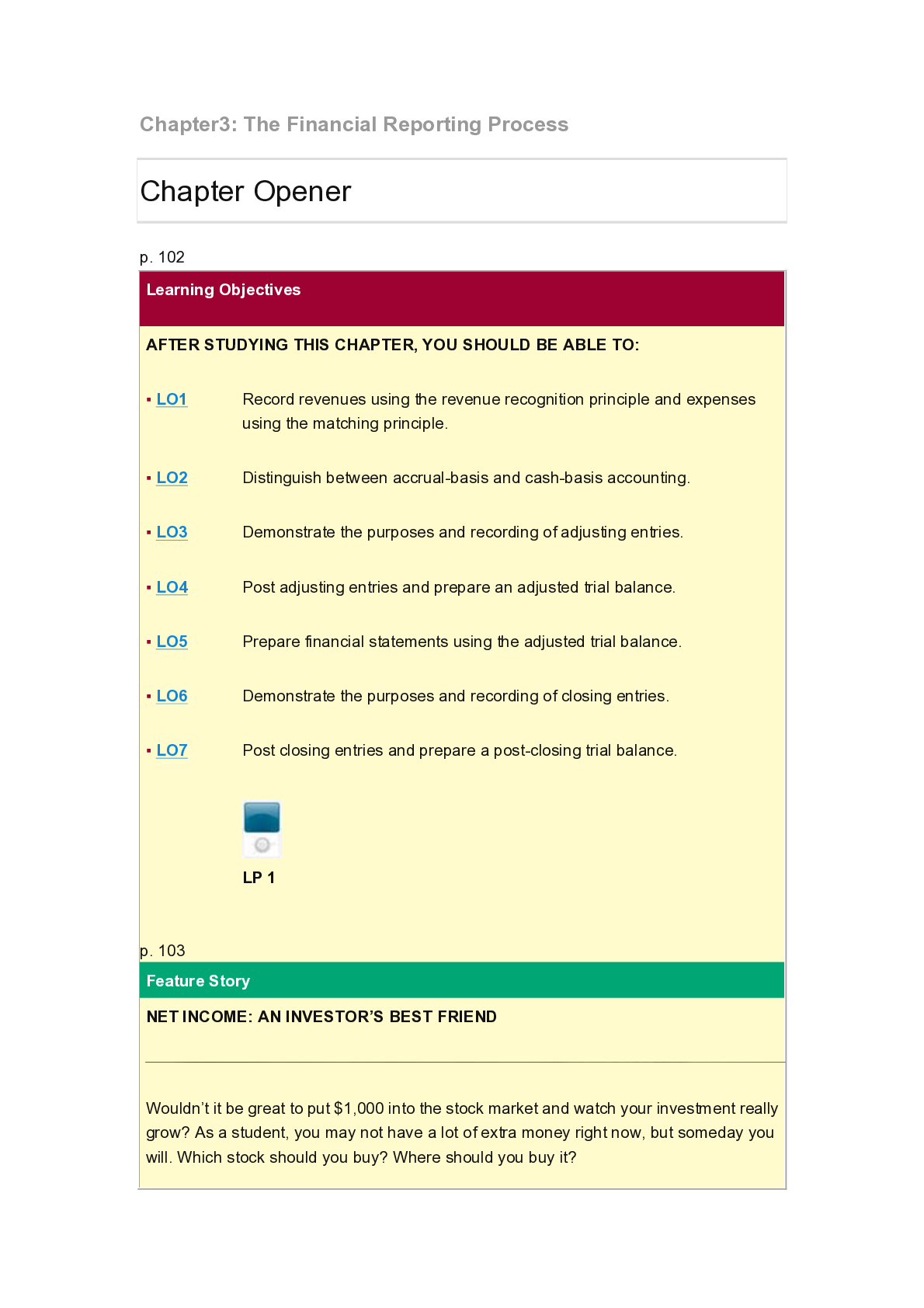




.png)

